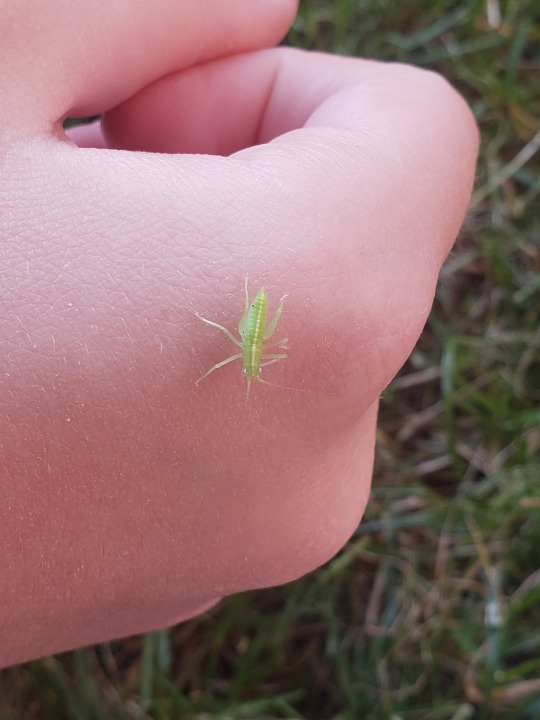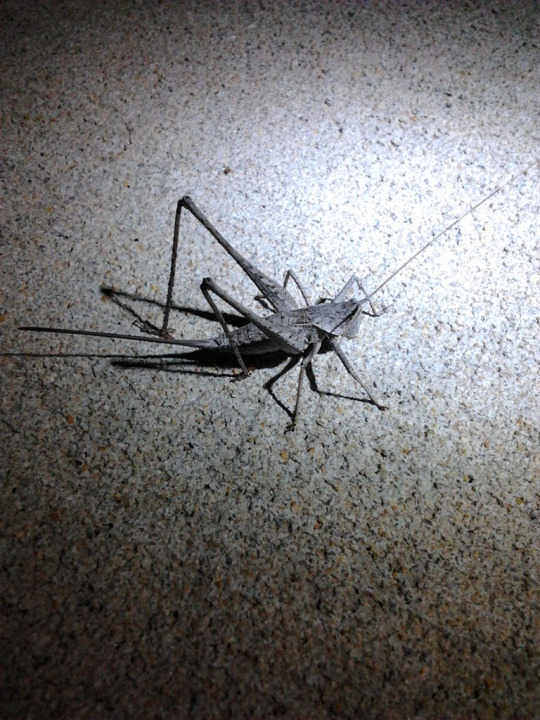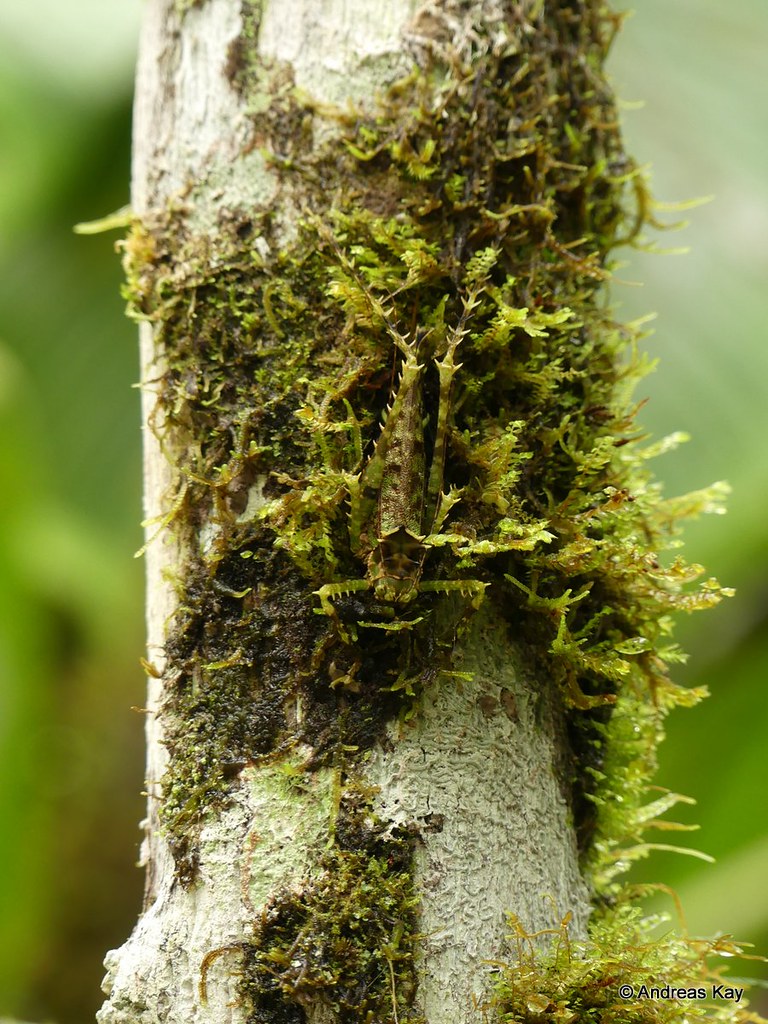#tettigonidae
Note


hey! i was wondering if i could get this little guy identified? he was crawling all over my friend and i for a good ten minutes. very cute
it’s a juvenile katydid (Tettigonidae) but as I’ve often said, photos of your bug are likely useless without a location attached
iNat AI suggested Meconema, a genus found in most of Europe and which has been introduced to the US, but I can’t say for sure since I do not know where the photo was taken
74 notes
·
View notes
Text
#1412 - Glenbalodectes amaroo - Amaroo Starry-eyed Katydid


Found it up the road from my place in Wellard, Perth, one evening, while out for a stroll, back in 2014. Finally have an ID for this ill-proportioned beast. Those really are over-large legs and ovipositor.
Native to a small section of WA’s coastal area, but finding it here in Perth is an extension on that - it hasn’t been reported this far south before.
5 notes
·
View notes
Photo

#entomology #tettigonidae gen #barbitistes (#charpentier 1925) #insect #macro #nofilter #animal #insect #macrophotography #macrophoto #nature #scienze #pokemon #italy #entomologia #agraria #green #red #yellow
#macrophoto#barbitistes#italy#agraria#charpentier#nature#macro#entomology#scienze#yellow#insect#green#macrophotography#animal#entomologia#nofilter#pokemon#red#tettigonidae
1 note
·
View note
Video
Moss Katydid, Championica sp., Tettigonidae by Andreas Kay
Via Flickr:
from Ecuador: www.youtube.com/AndreasKay
#Andreas Kay#Championica sp.#Ecuador#grasshopper#Katydid#Orthoptera#Phaneropteridae#Phaneropterinae#spiny#Tettigoniidae
33 notes
·
View notes
Photo

Foto macro proyección lateral de Saltamontes o Esperanza .(Tettigonidae sp..) Katydids o Bush crickets. by LOPEZ LUCIANO 7,000,000 VISITAS.GRACIAS.... Orden:Orthoptera Suborden:Ensifera Familia:Tettigoniidae Krauss, 1902. Lugar captura: Santiago.República Dominicana. Câmara: Nikon D 500. Lente Micro nikkor 105 mms 1:2.8 GED Magnificación: 1.5 X. Riel Wemacro, Apilados : a 300 micras, 42 fotos, F:8;ISO:100;Velocidad Obt: 1/4". Distancia total enfoque : 12.9 mms . 3 luces LED,Difusor casero de poliestireno. Ligntroom,Photoshops,Zerene. https://flic.kr/p/2kuq1wn
0 notes
Text
#conferma #presenza #popolazione #Saga #pedo #Orthoptera #Tettigonidae #Monti #Alburni #Campania #SALERNO #Cilento #Vallo #Diano https://www.researchgate.net/publication/256455314
0 notes
Photo

Phaneroptera falcata by terraincognita96 on Flickr.
Phaneroptera falcata
#Germany#Nordrhein-Westfalen#Northrhine-Westphalia#Tettigonidae#Phaneropterinae#Phaneroptera#falcata#Reseda#lutea
9 notes
·
View notes
Text
Cue Grasshoppers and Katydids

I was up at Cue a few weeks ago, with the WA Naturalists Club - it’s a Goldfields township some 700 north of Perth. Given that I had to spend most a day driving up, and the same back, I was only up there for the Saturday, but it was very worth it - for one thing, there were these guys around the campsite.
The Crested Katydid aka Superb Katydid is one of Australia’s most spectacular orthopterans, but has no close relatives. It’s widespread across the inland but seems to be relatively uncommon. With good rains they turn up on a variety of plants, and they’re thought to feed on flower buds, petals, and pollen. Which is a little odd, since nothing was in flower up there. That may explain why they were all so sluggish - on the other hand, maybe it was the cooling weather as well - we found large dead grasshoppers and katydids of a variety of species, just lying around.
Not a numbered species - since I’ve actually covered them before - this was the first time I’ve seen them in person :)
19 notes
·
View notes
Text
#1242 - Elephantodeta sp. - Hump-backed Katydid

Found dead inside an old car tire, of all places. Hump-backed Katydids are most common in dry areas, near the ground.
There’s two described species in this genus, but there’s a number of undescribed species, including one exceptionally large one from inland WA - i.e. this very region. But there’s also another, completely undescribed genus that’s quite similar.
Basically, if you can find somebody to pay you, you’ll have a job for life describing Australian insects.
This one is obviously a female, as you can tell from the large bladed ovipositor.
In Elephantodeta nobilis the males and females duet, with the female responding to the male's long and complex four-part call. But the males then had the problem of satellite males, who would sneak in close and then interject their own call call 200 milleseconds before the alpha male’s Part D was due to start. This is apparently effective enough at distracting the females, and annoying enough, that the alpha males respond by repeating Part D repeatedly.
Cue, Western Australia
EDIT: Most likely E. nobilis
7 notes
·
View notes
Video
youtube
Macrolyristes corporalis
2 notes
·
View notes
